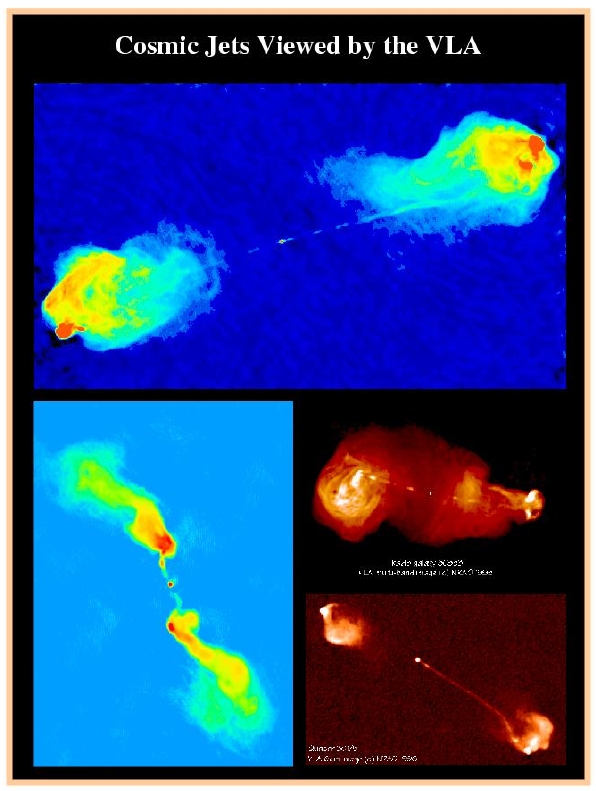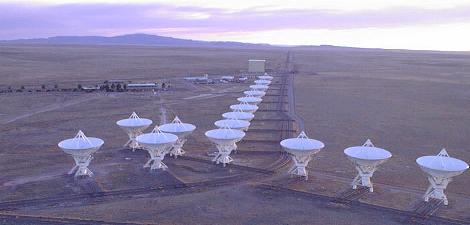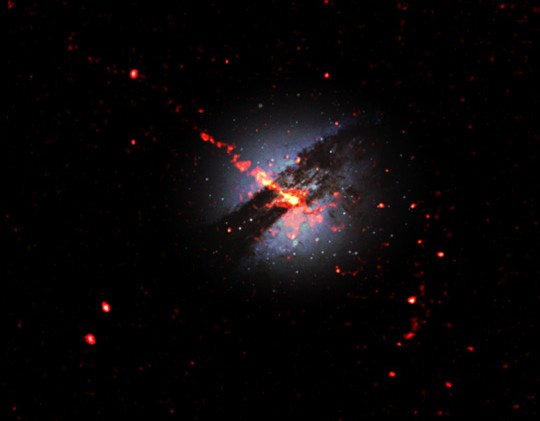Radio Astronomy is one of the greatest tools that humanity has to study and understand the Universe we are a part of. The ability of radio signals and other high energy signals to reach Earth through the star-stuff and galactic dust that blocks much of the visible light spectrum makes it ideal for studying the details of our cosmic surroundings.
The discovery of the Cosmic Microwave Background Radiation in 1964 by astronomers Arno Penzias and Robert Wilson was the culmination of work initiated by others in the 1940s, and earned them the 1978 Nobel Prize. When they pointed their

radiometer (intended for use with satellite communications and for radio astronomy) at otherwise empty spaces in the night sky, they always had a background "noise" at around 5 Kelvin, or just 5 degrees above absolute zero. This was a shock, not only because it should not have been there, but because it was isomorphic, the same in all directions. What they were the first to "see" was the leftover radiation from the Big Bang event at the beginning of our Universe's time. This has been more carefully mapped with microwave telescopes in orbit and looks like this. (click image to enlarge)

Science and the scientific pursuit of knowledge is riddled with great events like this one, events where instruments are created and used to try and record a specific thing, but instead wind up discovering something heretofore unknown, and definitely unexplained. This is what happened to the scientists from a team led by Alan Kogut of NASA's
Goddard Space Flight Center in Greenbelt, Maryland.
In July 2006, the team launched a hypersensitive instrument via a large balloon, named ARCADE (Absolute Radiometer for Cosmology, Astrophysics, and Diffuse Emission) which climbed to over 120,000 feet, where the atmosphere thins out into the vacuum of empty space. The sensors aboard were enclosed in 500 gallons of ultra-cold liquid helium, to bring the instrument's temperature down to the same level as the Cosmic Background, (since accurately measured at 2.7 degrees above absolute zero). They were attempting to study the heat given off by the very first stars in the Universe (which were likely ultra-huge and ultra-hot and ultra-short-lived), using the cold to negate any interference from the Cosmic Microwave Background. They did not get their data though, and this is what blew their minds.
"The universe really threw us a curve," Kogut says. "Instead of the faint signal we hoped to find, here was this booming noise six times louder than anyone had predicted." Detailed analysis ruled out an origin from primordial stars or from known radio sources, including gas in the outermost halo of our own galaxy. The source of this cosmic radio background remains a mystery.
Many objects in the universe emit radio waves. In 1931, American physicist Karl Jansky first detected radio static from our own Milky Way galaxy. Similar emission from other galaxies creates a background hiss of radio noise.
The problem, notes team member Dale Fixsen of the University of Maryland at College Park, is that there don't appear to be enough radio galaxies to account for the signal ARCADE detected. "You'd have to pack them into the universe like sardines," he says. "There wouldn't be any space left between one galaxy and the next."
So not only is there a Cosmic Microwave Background, there appears to be a Cosmic Radio Background! ARCADE is the first human instrument capable of detecting these radio signals. The source of this noise is unknown, and it remains unexplained. The beauty of humanity's search for truth is that whenever a question gets answered, two new questions are created. We will never run out of natural surprises. The only thing that can stop us is ourselves, and our complacency in the face of the unknown.









 radiometer (intended for use with satellite communications and for radio astronomy) at otherwise empty spaces in the night sky, they always had a background "noise" at around 5 Kelvin, or just 5 degrees above absolute zero. This was a shock, not only because it should not have been there, but because it was isomorphic, the same in all directions. What they were the first to "see" was the leftover radiation from the Big Bang event at the beginning of our Universe's time. This has been more carefully mapped with microwave telescopes in orbit and looks like this. (click image to enlarge)
radiometer (intended for use with satellite communications and for radio astronomy) at otherwise empty spaces in the night sky, they always had a background "noise" at around 5 Kelvin, or just 5 degrees above absolute zero. This was a shock, not only because it should not have been there, but because it was isomorphic, the same in all directions. What they were the first to "see" was the leftover radiation from the Big Bang event at the beginning of our Universe's time. This has been more carefully mapped with microwave telescopes in orbit and looks like this. (click image to enlarge)